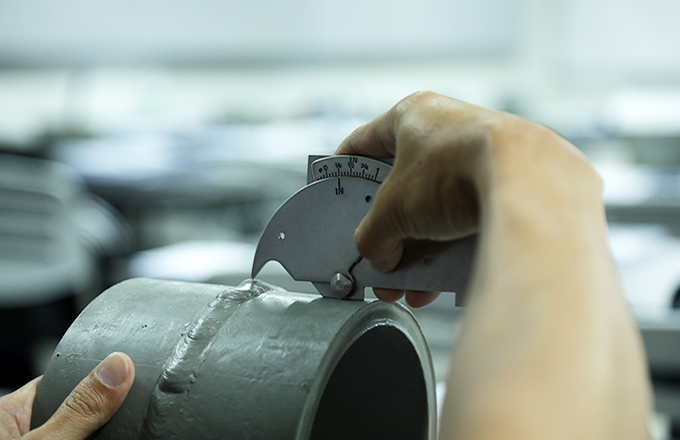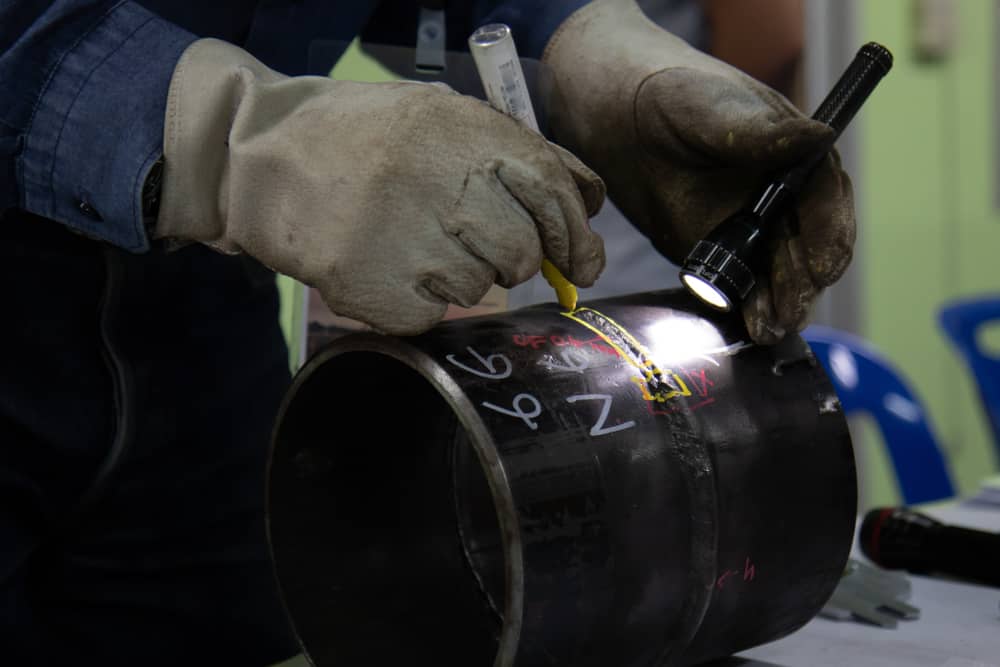How Welding Inspection Contributes to Longevity and Reliability in Manufacture Jobs
Welding evaluation acts as a fundamental aspect in guaranteeing the longevity and integrity of construction projects. By methodically determining potential issues throughout numerous phases of production, welding inspections not just avoid pricey failures but likewise foster a society of high quality guarantee within the team. Using sophisticated strategies, such as non-destructive testing, facilitates detailed assessments while maintaining material honesty. As projects advance, the impact of these assessments becomes progressively evident, increasing essential questions regarding their long-lasting benefits and implications for overall job success. What specific practices can be implemented to maximize these benefits?

Value of Welding Examination
Ensuring quality through welding evaluation is an important part of any kind of manufacture task. It functions as a guard to validate that welding procedures fulfill well-known criteria and requirements, therefore boosting the total stability of the structure or component being fabricated. Welding inspection is not just a step-by-step action; it is a necessary method that assists identify potential concerns early, ensuring that they are dealt with before they rise right into substantial troubles.
The relevance of welding examination can be highlighted by its function in maintaining safety and security and durability. Bonded joints are commonly subjected to extreme problems, and any type of defects can endanger the performance and long life of the last product. By applying extensive inspection methods, organizations can ensure conformity with industry laws, consequently minimizing threats connected with architectural failures.
In addition, efficient welding inspection fosters self-confidence among stakeholders, consisting of clients and governing bodies, that the project fulfills the best standards. This not just enhances the track record of the fabricator yet also adds to long-term expense financial savings by preventing rework and possible liabilities. Eventually, welding examination is essential to the success and integrity of fabrication jobs, enhancing the value of high quality guarantee in design practices.

Common Welding Flaws
Welding defects can dramatically threaten the structural integrity of fabricated parts, making their recognition and correction critical. Usual welding defects can be broadly categorized right into 3 types: geometric, metallurgical, and service-related.
Geometric problems include concerns such as damaging, where the base metal is eroded at the edge of the weld, and too much convexity, which can cause anxiety concentration points. These issues can endanger the stamina and sturdiness of the weld joint.
Metallurgical defects arise from inappropriate welding procedures or materials, bring about issues such as porosity, where gas pockets form within the weld, and absence of combination, which occurs when the weld steel stops working to bond correctly with the base steel. These problems can considerably damage the weld's performance.
Service-related problems might not end up being apparent up until after the component remains in use. Instances include splitting due to thermal stress and anxiety or tiredness, which can bring about disastrous failures if not attended to.
Understanding these typical defects equips fabricators to carry out effective assessment strategies that improve the integrity and longevity of their jobs, ultimately making certain safety and performance requirements are met.
Examination Techniques and Techniques
A detailed strategy to evaluation methods and approaches is essential for mitigating and determining welding flaws in manufacture projects. Various methods are utilized to make sure the honesty of welds, consisting of visual inspection, ultrasonic testing (UT), radiographic testing (RT), magnetic bit screening (MT), and color penetrant screening (PT) Each strategy has its toughness and details applications.

Magnetic particle screening is beneficial for identifying surface and near-surface issues in ferromagnetic materials. By using a magnetic field and making use of ferrous particles, examiners can identify interruptions efficiently. Dye penetrant screening highlights surface-breaking defects with the application of a color that seeps into fractures, making them noticeable under ultraviolet light.
Employing a combination of these approaches ensures an extensive analysis, enhancing the reliability of welded frameworks.

Effect on Job Durability
Effective inspection techniques dramatically affect the durability of construction projects. By recognizing see this page possible problems and disparities in welding processes, examinations make sure that structures are built to hold up against functional tensions with time. When welds are completely analyzed, the likelihood of unseen problems, which could cause structural failings, is reduced.
Regular assessments promote adherence to market standards and guidelines, which are vital for ensuring the longevity of welded joints. Such conformity not only boosts the integrity of the task but additionally assures stakeholders pertaining to the quality of the job. Timely discovery of defects enables for rehabilitative actions to be taken early, stopping pricey repair work or full overhauls down the line. Welding Inspection Milwaukee.
Additionally, effective assessment techniques foster a culture of quality control within fabrication teams. When employees are mindful that their job will be rigorously examined, they are more probable to follow best methods and keep high standards throughout the production procedure. Inevitably, this dedication to top quality not just expands the life-span of the task yet also reduces maintenance costs, thereby enhancing the overall financial viability of manufacture undertakings.
Enhancing Dependability in Construction
Reliability in fabrication is significantly boosted with extensive inspection procedures that attend to prospective weaknesses in welding techniques. Efficient welding inspection not just determines problems early yet likewise offers critical responses to welders, making certain adherence to established specs and standards. By making use of non-destructive testing methods, such as radiographic or more helpful hints ultrasonic evaluations, fabricators can identify the integrity of welds without endangering the material.
In addition, routine inspections promote a culture of high quality and accountability among manufacture teams. They are much more most likely to stick to best procedures and methods when welders recognize that their work is subject to rigid analyses. This proactive technique decreases the risk of expensive failings throughout the operational phase of a job.
In addition, comprehensive paperwork of examination results produces a beneficial database of information that can be used for future jobs. Fads in issues can be analyzed to improve welding methods and training programs (Welding Inspection Milwaukee). Eventually, boosting integrity in manufacture through extensive evaluation processes not only boosts the life-span of get redirected here the made parts yet additionally enhances stakeholder self-confidence in the task's total top quality and durability. Purchasing robust welding inspection techniques is necessary for attaining long-lasting reliability in any type of construction venture.
Verdict
In summary, welding evaluation acts as a crucial element in ensuring the long life and dependability of fabrication tasks. By determining issues early and utilizing non-destructive testing approaches, evaluations foster a society of quality guarantee that sticks to sector standards. The organized paperwork of outcomes not only promotes trend evaluation but additionally enhances liability and structural stability. Ultimately, efficient welding inspection methods enhance stakeholder confidence and dramatically add to the financial viability of construction endeavors.
Welding inspection offers as a foundational component in making certain the longevity and reliability of manufacture projects.Making certain top quality through welding examination is a vital element of any kind of manufacture task. Inevitably, welding inspection is essential to the success and dependability of construction jobs, strengthening the value of high quality assurance in engineering methods.
A detailed technique to assessment methods and techniques is necessary for alleviating and determining welding problems in construction projects.In summary, welding inspection offers as a crucial element in guaranteeing the durability and reliability of fabrication tasks.